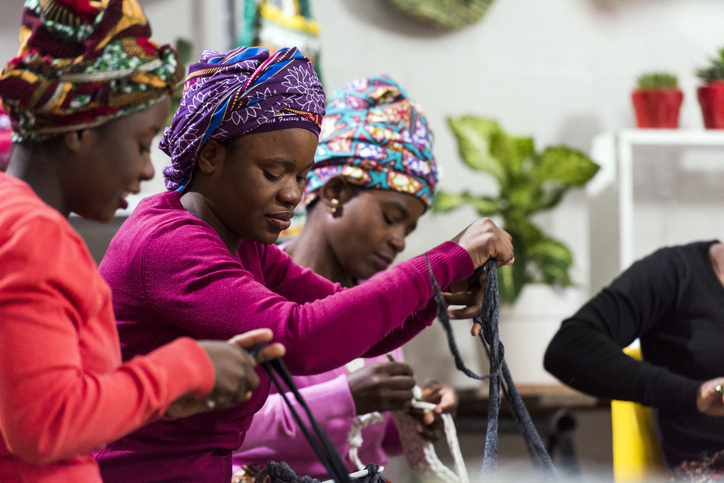How do young boys and girls feel about being left behind? This column draws lessons from a daycare experiment in Rio de Janeiro. The results suggest that gender differences in social preferences, such as attitudes toward inequality, are malleable and can be influenced by the socialization process experienced by children early in their lives.
Public childcare centers that provide learning and socialization opportunities for children are a favorite policy option for many governments. They are also popular with parents, because they provide free full-time daycare for their offspring, allowing them more time for work or other household activities.
But such centers are expensive to build and run, and so they are seldom offered for free at a large scale, even in high-income countries. Assessing the impact of providing public daycare services is therefore an important objective for research to inform policy.
An assessment can include a number of angles, including caregivers’ labor market outcomes and children’s later learning progression at school. But it is also valuable to measure the effects of daycare attendance on children’s economic and social preferences since for many of them, it is their first experience of socialization beyond the immediate family.
This relates to a more general question about the origin of preferences and whether they are malleable. For example, men and women often have different preferences, which could at least partly explain gender differences in choices and outcomes.
Some would argue that if gender gaps in outcomes are driven by gender differences in preferences, then there is no need to address them. On the other hand, boys and girls may develop different preferences because they are raised differently from very early in their lives. There is growing interest in understanding the origins of gender differences in preferences – and one way to advance our understanding of individual differences in decision-making is to study the development of decision-making in young children.
Daycare in Rio de Janeiro
In 2007, the local government of the city of Rio de Janeiro used a lottery system to determine admissions into oversubscribed public free-of-charge daycare centers. While the lottery was mainly designed to assign daycare spots when they were oversubscribed, the mechanism created variation that makes it possible to identify the effects of daycare enrollment in the context of a large city in a middle-income country.
There was no difference in terms of gender, age, racial and socio-economic background among the children who won or lost the lottery. But winning the lottery in 2007 significantly influenced daycare enrollment in 2008 – and enrollment in 2008 affected enrollment in subsequent years.
Compliance was imperfect in the sense that some lottery winners may not have fully attended daycare and some lottery losers may have nevertheless attended (either because their particular daycare was not oversubscribed or because their parents enrolled them in a private option). But winning the lottery translated into a 34% increase in time in daycare up to the age of 4, allowing identification of the effects of daycare attendance.
In a recent study, we made use of this variation in daycare enrollment to investigate the role of early education in children’s economic preferences and decision-making abilities. Nine years after those who were admitted started attending daycare, we surveyed about 2,100 of the applicants. We administered four experiments with incentives to measure their economic preferences as well as the quality of their decision-making.
Overall, we find that daycare attendance did not affect economic preferences and had no impact on decision-making abilities. But there is one exception: daycare attendance seems to have changed children’s social preferences, particularly those of girls.
How do we measure social preferences?
Children played a sharing task using a tablet. In the task, they had to choose between two different allocations; each allocation paid a number of tokens to the participant, and a number of tokens to another anonymous child (the tokens could be exchanged for toys at the end of the survey).
For example, the children would have to choose between the allocation on the left and the one on the right in the screenshot of the tablet in Figure 1. In this case, the participant chose between the equitable allocation on the left in which the two children get the same (three tokens for the participant and three for the other child) and the allocation on the right in which she received less than the other child (four for the participant, but six for the other child).

Figure 1: Snapshot of the sharing task with an example of disadvantageous inequality. In blue (‘Leandro’) are the tokens assigned to the participating child, while in red (‘Outra Criança – Other Child’) are the tokens assigned to the other anonymous child.
Note that the allocation on the right of the screen improves the allocation of both children but introduces inequality. It represents a case of ‘disadvantageous inequality’ where the participant gets two tokens less than the other child. We infer that a participant exhibits ‘aversion to disadvantageous inequality’ if she chooses the allocation on the left, ‘paying’ one token to ensure that she is not left behind.
The effects of daycare attendance on social preferences
We used the lottery system implemented in Rio de Janeiro to estimate the ‘intent-to-treat’ effects of daycare attendance. The top panel of Figure 2 shows no effect on boys’ choices (in blue). In contrast, the bottom panel shows that daycare attendance increased girls’ aversion to disadvantageous inequality (in pink).
Treatment girls were substantially more likely than control girls to choose the equitable allocation, forgoing one token for themselves and ‘taking away’ three tokens from the other child to ensure they would not be left behind. Among control children, control boys exhibited a greater aversion to being left behind than control girls did. The effects of daycare attendance are large enough to close this gap: treatment girls were as averse to disadvantageous inequality as control boys.

Figure 2: Intent-to-treat effects of daycare attendance on preferences expressed in the sharing task illustrated in Figure 1. Boys on the top panel in blue, girls on the bottom panel in pink. The markers represent effect sizes. The brackets correspond to 95% confidence intervals.
A natural question to ask is why the daycare lottery changed girls’ preferences but not those of boys. One possible explanation is that it changed girls’ perceptions of gender roles, including about how accommodating they are expected to be, and how acceptable it is for girls to be more concerned with their own wellbeing and less concerned with the wellbeing of others.
In any case, the evidence from the Rio de Janeiro daycare experiment suggests that gender differences in social preferences, such as attitudes toward inequality, are malleable and can be influenced by the socialization process experienced by children early in their lives.









